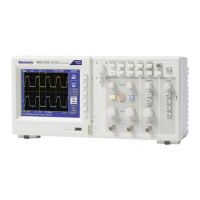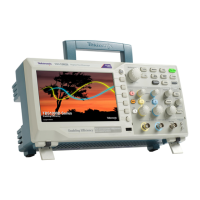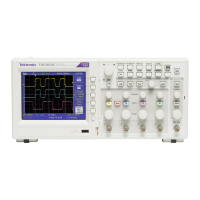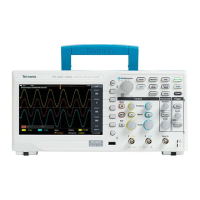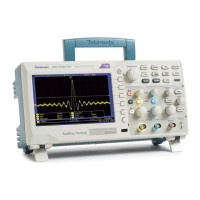Actual high-frequency waveform
Apparent low-frequency waveform due
to aliasing
Sample points
The oscilloscope accurately represents signals, but is limited by the probe
bandwidth, the oscilloscope bandwidth, and the sample rate. To avoid aliasing,
the oscilloscope must sample the signal more than twice as fast as the highest
frequency component of the signal.
The highest frequency that the oscilloscope sampling rate can theoretically
represent is the Nyquist frequency. The sample rate is called the Nyquist rate, and
is twice the Nyquist frequency.
The oscilloscope maximum sample rates are at least ten times the bandwidth.
These high sample rates help reduce the possibility of aliasing.
There are several ways to check for aliasing:
■
Turn the horizontal Scale knob to change the horizontal scale. If the shape of
the waveform changes drastically, you may have aliasing.
■
Select the Peak Detect acquisition mode. This mode samples the highest and
lowest values so that the oscilloscope can detect faster signals. If the shape of
the waveform changes drastically, you may have aliasing. See Acquisition
modes on page 23.
■
If the trigger frequency is faster than the display information, you may have
aliasing or a waveform that crosses the trigger level multiple times.
Examining the waveform allows you to identify whether the shape of the
signal is going to allow a single trigger crossing per cycle at the selected
trigger level.
If multiple triggers are likely to occur, select a trigger level that will generate
only a single trigger per cycle. If the trigger frequency is still faster than the
display indicates, you may have aliasing.
If the trigger frequency is slower, this test is not useful.
■
If the signal you are viewing is also the trigger source, use the graticule or the
cursors to estimate the frequency of the displayed waveform. Compare this to
the Trigger Frequency readout in the lower right corner of the screen. If they
differ by a large amount, you may have aliasing.
Understanding oscilloscope functions
TBS1000B and TBS1000B-EDU Series Oscilloscopes User Manual 25
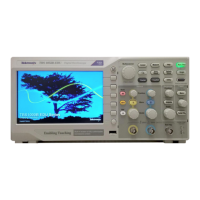
